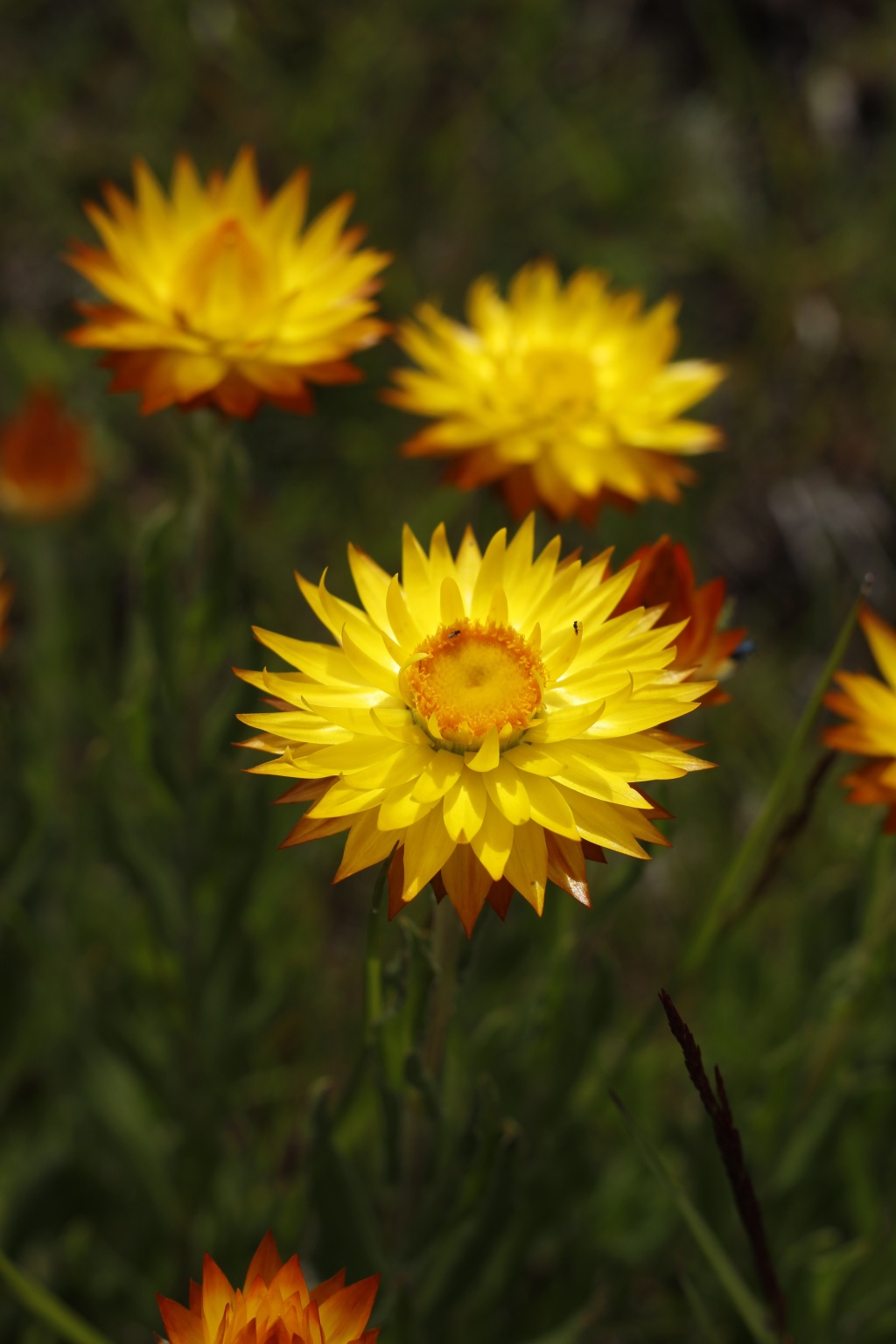Xerochrysum
Perennial, biennial or annual, rhizomatous or taprooted herbs. Leaves alternate, sessile, partially stem-clasping, entire, hairs glandular and/or cottony. Capitula solitary, or several in a branched inflorescence, terminal, heterogamous; involucral bracts 8–12-seriate, rigidly scarious, opaque, yellow or white to white-pink or white-purple, intermediate bracts longest; stereome flat and wide; receptacle flat, ebracteate, smooth or with membranous ridges and glabrous or with very short bristles between florets; female florets filiform, fewer than bisexual florets; style branches subterete, inner surface papillose with acute or rarely obtuse apices; anthers with concave apical appendages and short tails. Cypselas c. obloid, quadrangular, glabrous, smooth, those of female and bisexual florets similar; pappus of free or basally connate capillary bristles, barbellate with a few longer projections at the apex, persistent or deciduous.
An endemic Australian genus which has recently revised to include between 24 and 27 species (Collins et al. 2022). See note under X. bracteatum.
Xerochrysum species were previously placed in the genus Helichrysum Mill. Anderberg (1991) erected the genus Bracteantha Anderb. & Haegi to accommodate all the Victorian Helichrysum species with large capitula and showy bracts, that form ectomycorrhizal associations, not realising that one of these species, Helichrysum bracteatum (Vent.) Andrews, had previously been placed in its own monotypic genus, Xerochrysum, by Tzvelev (Schmidt-Lebuhn et al. 2015). Bayer (2001) subsequently transferred all species of Bracteantha to Xerochrysum. See note under Coronidium.
 Spinning
SpinningBayer, R.J. (2001). Xerochrysum Tzvelev, a pre-existing generic name for Bracteantha Anderb. & Haegi (Asteraceae: Gnaphaliae). Kew Bulletin 56: 1013–1015.



